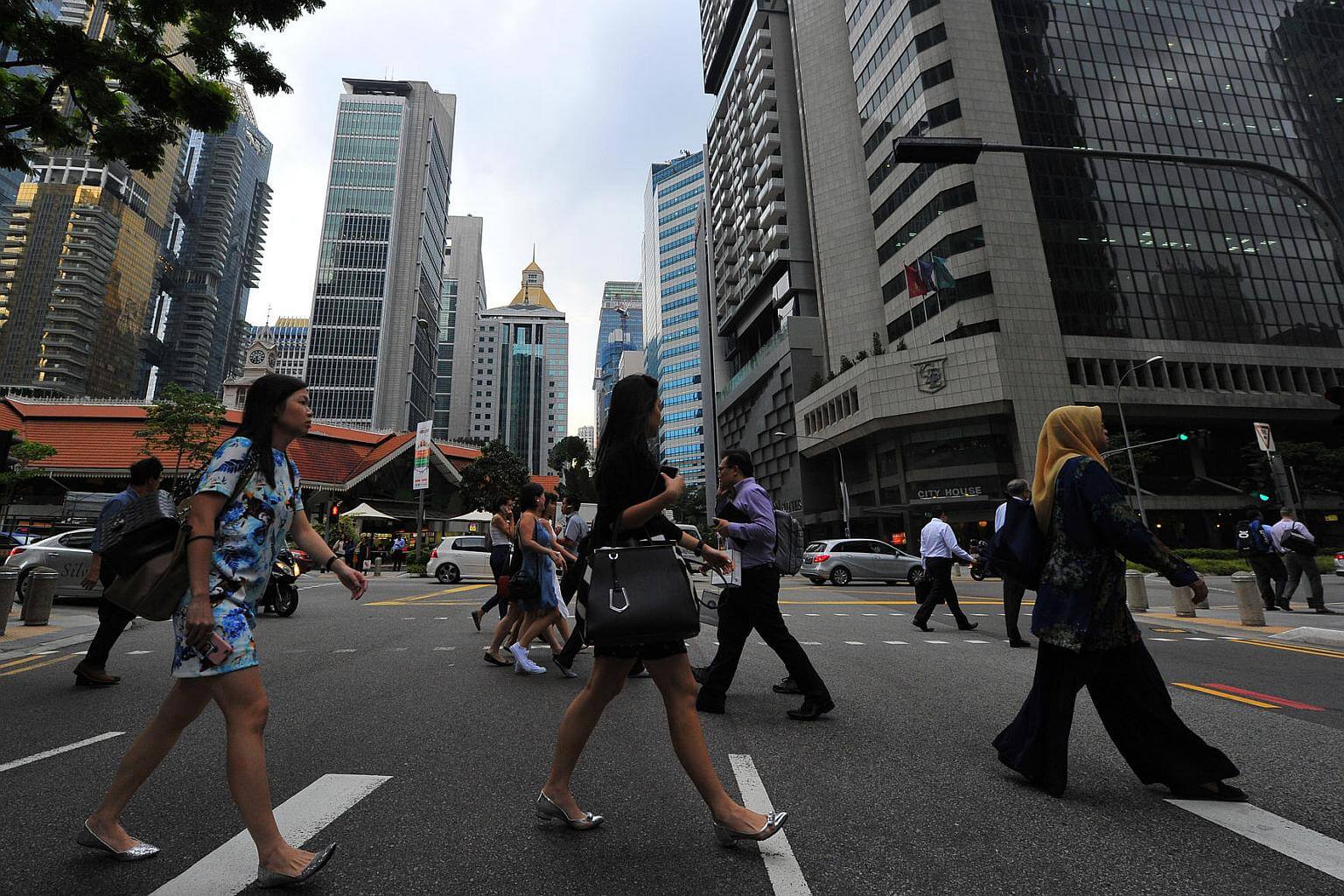AIA survey uncovers 3 gaps in critical illness coverage here
400 Singaporeans, some of whom are recovering or have recovered from critical illness, share their concerns
Sign up now: Get ST's newsletters delivered to your inbox

Office workers crossing the road at Robinson Road in the Central Business District on March 24.
PHOTO: ST FILE
Lorna Tan
Follow topic:
Singaporeans are financially unprepared for critical illnesses, while those who have recovered from such a condition are concerned about not having protection should another debilitating illness strike.
These attitudes are reflected in an AIA Health Matters Survey 2016, which highlighted three gaps in critical illness coverage here.
The survey, conducted by Nielsen in the first half of this year, included 300 Singaporeans aged 30 to 55, with monthly household income of $5,000 and above.
The aim was to better understand their concerns on critical illness. Another 100 Singaporeans who are recovering or have recovered from critical illnesses were also surveyed.
GAP NO. 1: The average coverage amount is insufficient to cover loss of income and other relevant costs
MediShield Life and Integrated Shield Plans provide important before-, during- and after-hospitalisation coverage.
But people often neglect to take into account other costs such as loss of income when they are diagnosed with a critical illness. This may affect their ability to pay for their home mortgage, children's education and other financial commitments.
In fact, 75 per cent of those diagnosed with critical illness stop working fully or partially, and almost one in two (47 per cent) of them are sole breadwinners.
However, on average, their sum assured is insufficient to protect themselves and their families.
The survey indicated that the average sum assured from critical illness plans is below $150,000. This amount would cover only 11/2 years of lost income in the event of a critical illness diagnosis, providing protection for less than half of the average 31/2 years of treatment required before the condition stabilises.
Combined with in-hospital, post-hospital and other related costs, it is no surprise that 95 per cent worry about the financial impact on their family members if they were to be diagnosed with a critical illness.
GAP NO. 2: Singaporeans are concerned about not having protection should another critical illness strike
Among survey respondents already diagnosed with critical illness, almost all (97 per cent) are worried they may be diagnosed with another critical illness. At present, almost one in three (32 per cent) are already diagnosed with more than one critical illness.
Insurer AIA says that it is essential to stay insured after the diagnosis of critical illness as survival rates are high. For example, more than seven in 10 breast cancer patients survived at least five years, with the highest survival rates of 80 to 90 per cent among women who discovered the cancer early.
The survey showed that more than nine in 10 (94 per cent) find it challenging to purchase another critical illness plan following a critical illness diagnosis, even though more than 2 in 5 (41 per cent) are looking to buy another such cover.
Dr Wong Nan Soon, consultant medical oncologist at OncoCare Cancer Centre Singapore, said: "The majority of patients are financially unprepared for cancer treatment and are shocked that modern chemotherapy and targeted therapy can cost so much.
"Besides the physical strain of undergoing treatments, patients also worry about the risk of being diagnosed with other critical illnesses such as heart attack or stroke, and yet another extended period away from work which will worsen their financial situation."
GAP NO. 3: Singaporeans seeking protection for more critical illness conditions across different stages
More than nine in 10 (96 per cent) agree critical illness protection from early to advanced stages is important or very important. This is because they want to be free of financial worries if they are diagnosed with critical illness (70 per cent) and do not want to burden their family if they are diagnosed with a critical illness (59 per cent).
The top two reasons for Singaporeans wanting to purchase an additional critical illness plan are that the illnesses covered under their current plans are not comprehensive enough (53 per cent), and that their coverage is only for major stage critical illnesses (40 per cent) without protection for early and intermediate stages.

